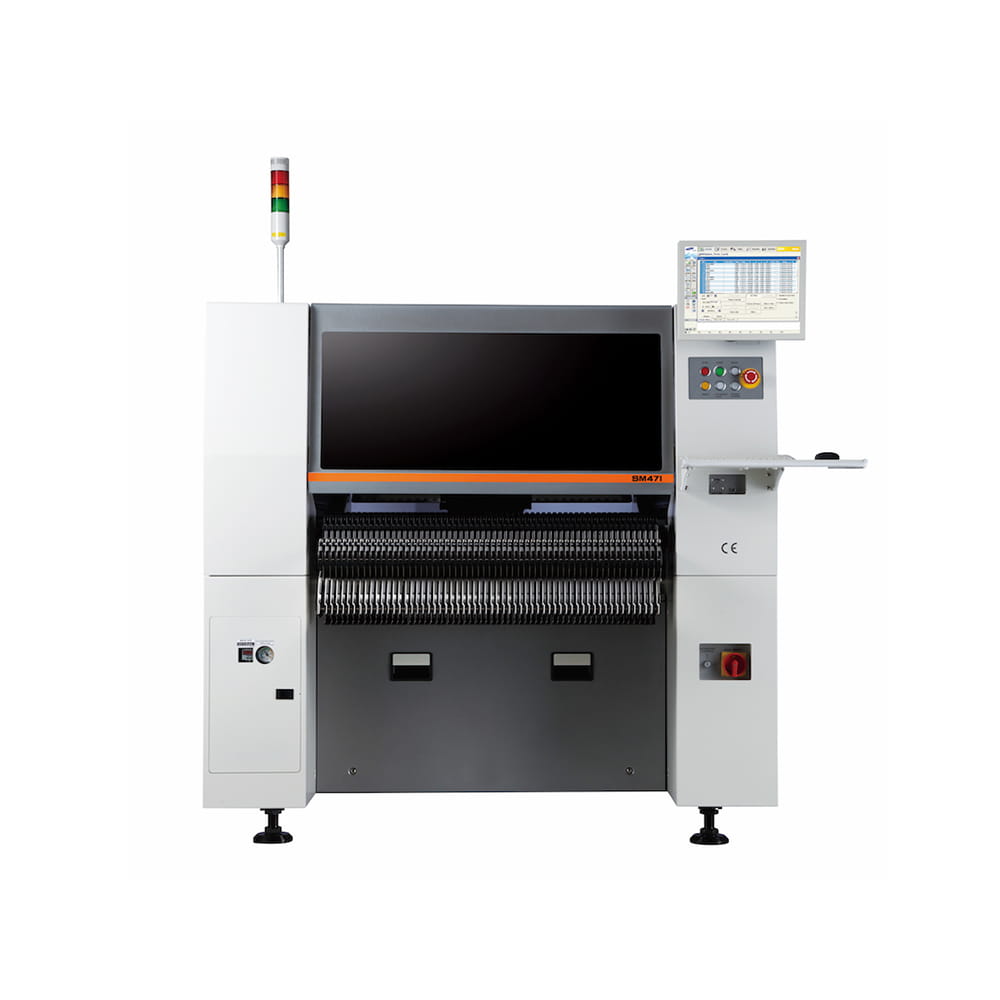SMT Equipment and Process
Highleap’s production line utilizes top SMT placement, reflow gear. Automated optical inspection after, every board passes strict criteria.
What is Surface Mount Technology?
Surface Mount Technology (SMT) refers to a manufacturing process whereby electronic components are placed directly onto the surface of printed circuit boards, rather than passing leads through holes in the board. This technology was pioneered in the 1960s by IBM, who utilized specialized SMT machines to solder components onto boards without wire leads.
Gradually the electronics industry transitioned from through-hole technology (THT) to SMT. Surface-mount devices (SMDs) began replacing traditional through-hole components, as SMT offered significant space savings. By mounting flat onto the surface of the PCB, SMDs reduce wasted board space and enable higher component density. This allows for product miniaturization and improved functionality within the same space.
Connection reliability is also enhanced through SMT. The direct contact between SMD leads and circuit traces produces a stronger, more durable bond compared to through-hole joints where leads bend under the board. Thermal management tends to be better as well.
Today, modern circuit boards utilize a mix of SMT and THT components to optimize performance for different design needs. Most commodity devices are fully SMT, but some components like large transformers remain better suited to traditional assembly due to size and heating. Overall, SMT is the predominant assembly method owing to demonstrated space and reliability advantages over THT. SMT allows for compact designs and manufacturing improvements. It continues revolutionizing electronics production through enabling smaller devices, denser layouts, and streamlined processes. The following outlines the basic flow of an SMT line:
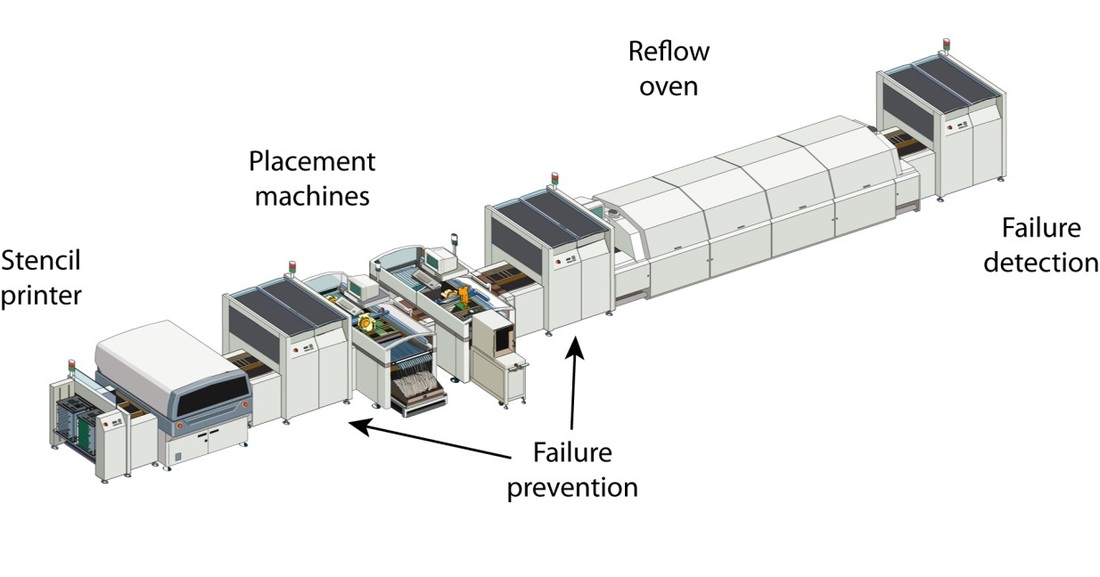
SMT equipment and process procedure
The SMT (Surface Mount Technology) manufacturing process is a crucial aspect of modern electronics production. It involves intricate stages and specialized equipment to create high-quality printed circuit boards (PCBs). This overview delves into the notable features that set Highleap’s SMT manufacturing process apart from traditional industry practices.
For more detailed information regarding SMT manufacturing processes and equipment, please reach out to our engineering team at Highleap. The following is a sample overview of the SMT production process:
1. Preparation Before SMT Soldering Process
PCB Data (Gerber)
- The standard electronic file for the circuit diagram should include a minimum of four layers: the PAD file, the through-hole file, the silk-screen file, and the solder mask file.
- Ideally, it is best to provide Gerber files generated by the PCB manufacturer.
- Standard board edge specifications: Leave a 10mm margin on both the top and bottom of the board.
- Standard positioning hole specifications: One positioning hole on each side of the same board edge, with a center distance of 5mm from the edge and a diameter of 4mm.
- Standard visual reference point specifications: On opposite corners, there should be asymmetric solid solder dots of 1mm, with a transparent circle of 3mm in diameter around them.
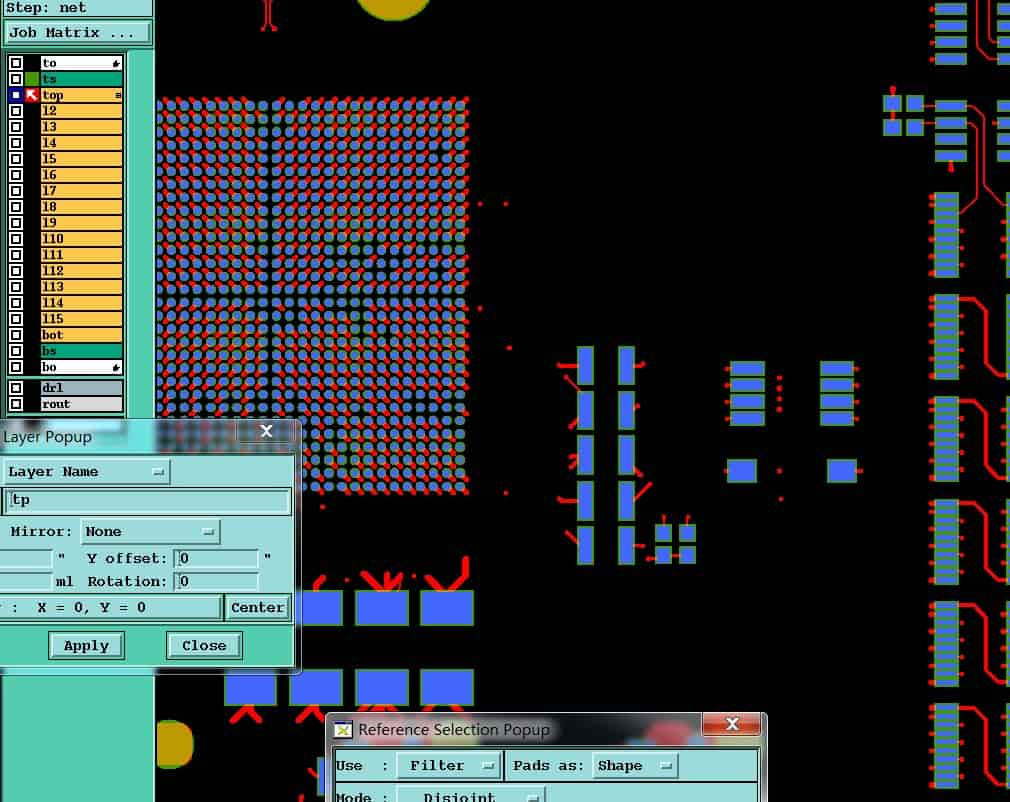
SMT
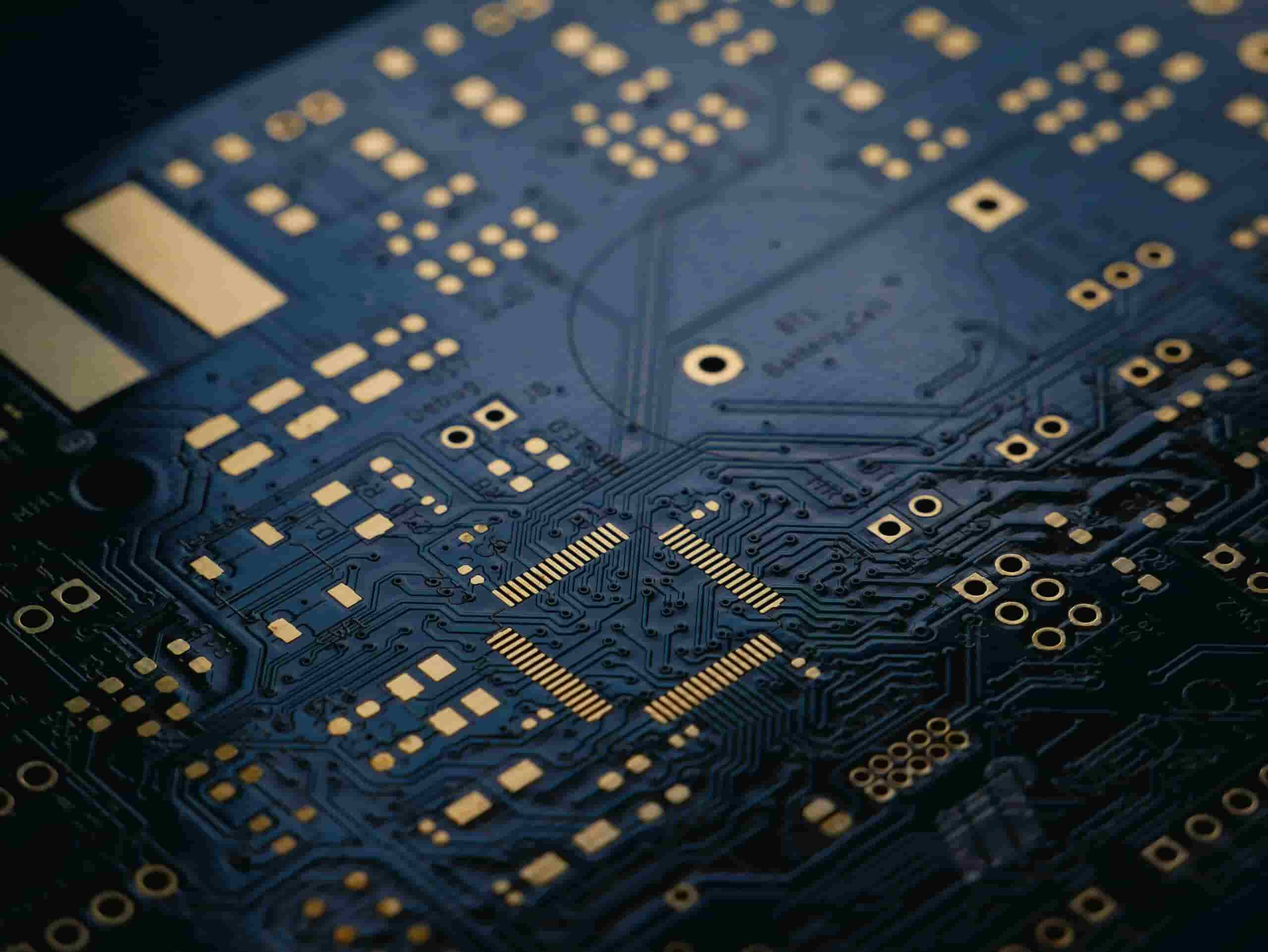
SMT
PCBA solution-SMT process flow
Bill of Materials (BOM)
- Coordinates of component placement in electronic files (CAD) provided as a text file with the extension “.TXT.”
- A list differentiating materials used for SMT (Surface Mount Technology) on both sides and materials used for DIP (Dual In-line Package).
- A separate list for SMT materials on the front side, SMT materials on the back side, and DIP materials. Please provide a method to distinguish between components on both sides.

BOM
Supplementary Materials
- Reflow temperature testing boards (including scrap boards with important components).
- Empty PCB boards, typically using Class A PCB boards at Norde.
- Making steel stencil. Highleap choose laser cut stencils to ensure accurate and reliable solder paste deposition.
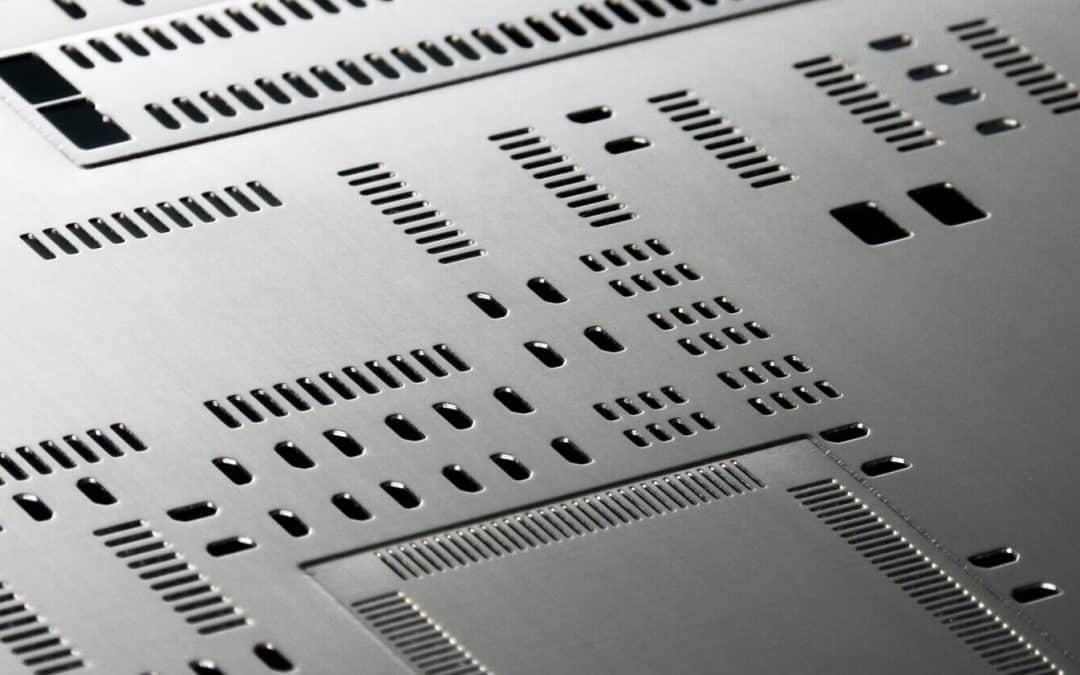
Making steel stencil
2. Electronic Components Sourcing
The material procurement team initiates the acquisition of raw materials based on the provided BOM (Bill of Materials) list from the customer, ensuring the accuracy of the production materials. Following procurement, materials undergo inspection and processing, including processes such as pin cutting and resistor pin forming, to enhance production quality. Highleap Electronics relies on dedicated suppliers for material supply, ensuring a well-established supply chain.
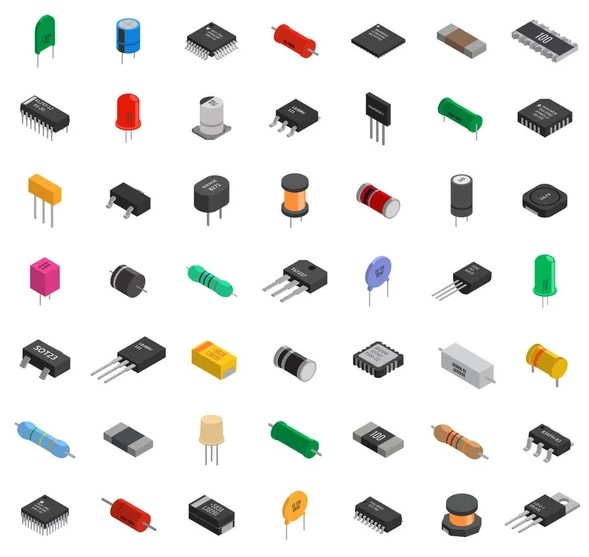
Electronic Components Sourcing
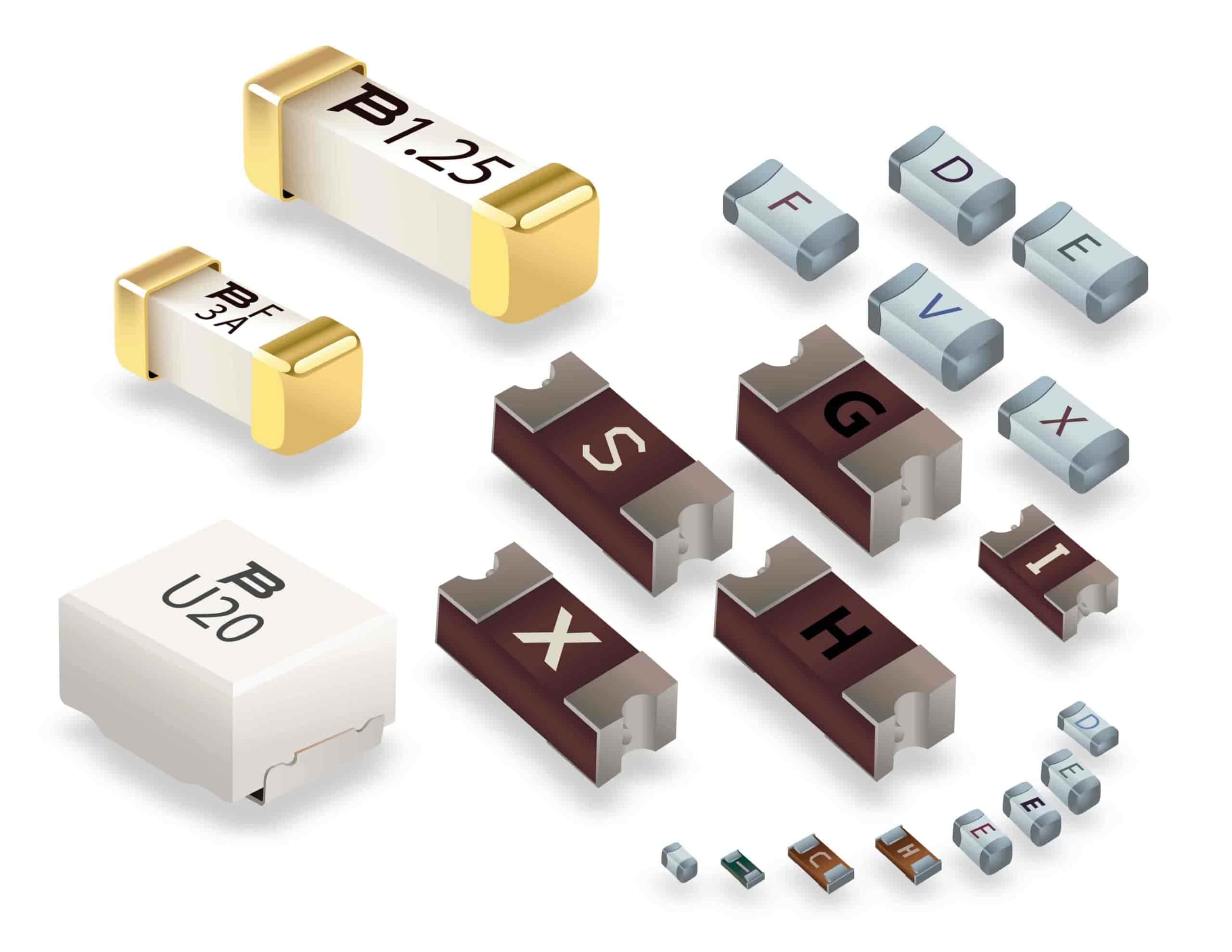
Electronic Components Sourcing
3. SMT Solder paste printing
Highleap is a leading company in the electronics industry. During the SMT (Surface Mount Technology) process, solder paste printing is a crucial step. Solder paste, a mixture of tin and flux, is applied to connect electronic components to the PCB. This is achieved by using a stainless steel stencil, mounted on the bare board, which selectively leaves openings for component placement.
Highleap’s skilled technicians ensure precise alignment of the stencil and utilize mechanical fixtures to secure it in place. With careful control, the solder paste is accurately distributed across the exposed areas of the PCB using an applicator.
Highleap’s quality control team conducts thorough inspections to verify proper application of solder paste—ensuring it is limited to the necessary areas and that all pads are adequately covered. For double-sided SMT boards, this process is repeated for each side.
Highleap proudly utilizes DELTA solder paste, a premium soldering material compliant with RoHS, REACH, and JEIDA directives. The DELTA solder paste composition consists of 96.5% tin, 3% silver, and 0.5% copper. It is utilized in reflow soldering, while solid versions are employed in manual and wave soldering processes.
By employing top-quality solder paste and adhering to meticulous application procedures, Highleap ensures reliable and robust solder joints during subsequent manufacturing steps. Our commitment to excellence and stringent quality control measures enable us to deliver superior PCB assemblies.
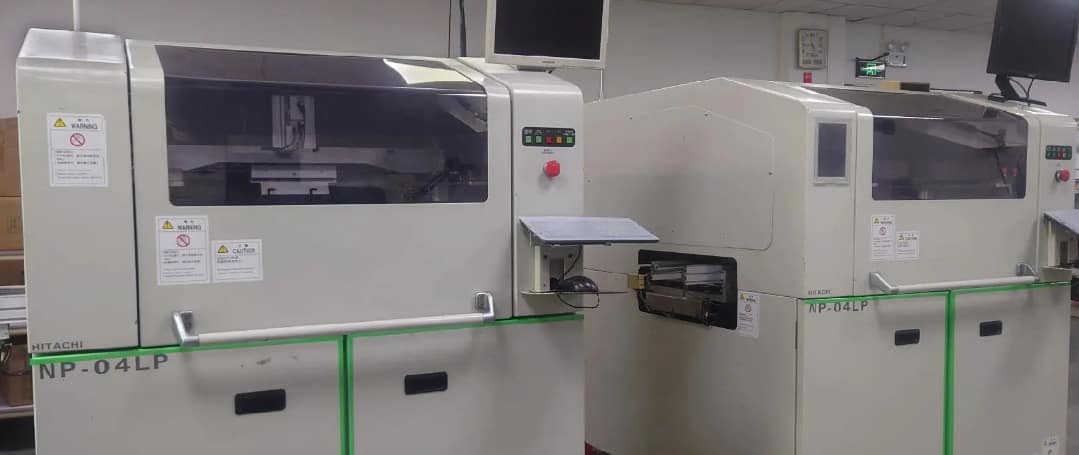
SMT equipment-SMT Solder paste printing
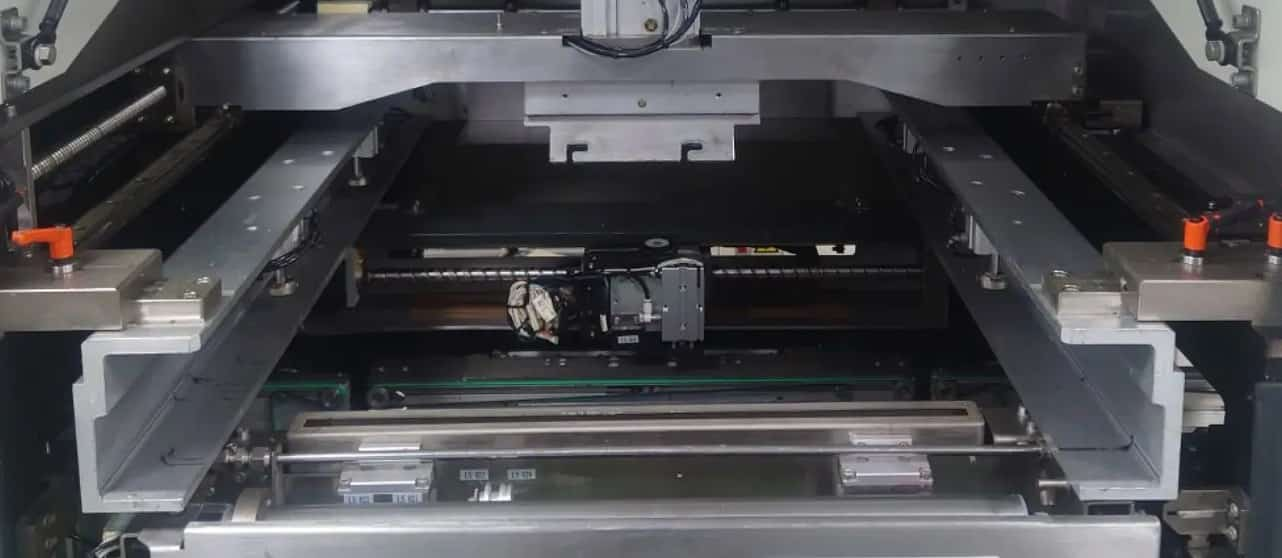
Internal diagram of SMT Solder paste printing equipment
4. SMT Placement
After the solder paste is applied to the bare PCBs, they are transferred to Highleap’s automated Pick & Place machines for the precise placement of components onto their designated pads. The component mounting process is fully automated for optimal accuracy and efficiency, relying on the project’s pickplace file that contains component coordinates and rotation data.
Highleap’s advanced Pick & Place machines execute the component placement with high precision. The machines use the pickplace file to determine the exact location and orientation of each component. This automated process ensures consistent and accurate placements, minimizing human error and enhancing productivity.
Once the components are mounted, the boards undergo an inspection to verify the accuracy of all placements. Highleap’s quality control team meticulously examines the boards to ensure that the components are correctly positioned before proceeding to the subsequent soldering process. This inspection step guarantees that any potential issues are identified and resolved early in the manufacturing process.
By leveraging automated Pick & Place machines and conducting thorough inspections, Highleap maintains the integrity and accuracy of component placements during PCB assembly. This attention to detail ensures the reliability and functionality of the final product.
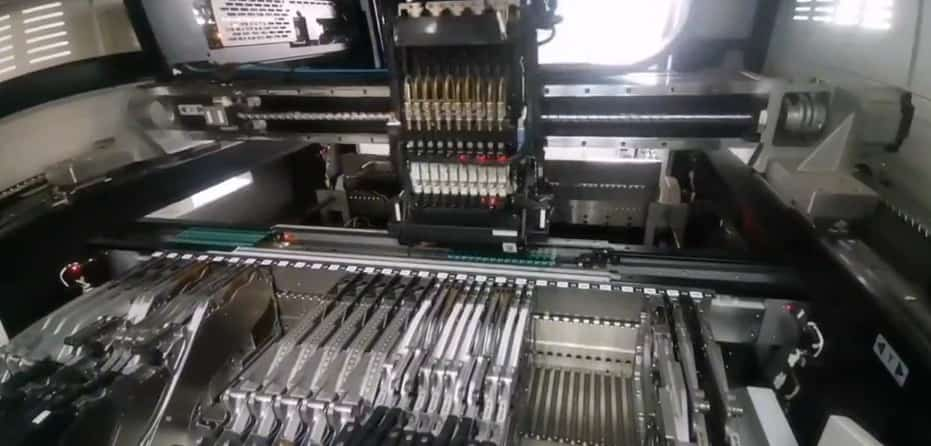
SMT equipment-SMT Solder paste printing
PCB Assembly Internal Video
5. Reflow Soldering
The deployment of reflow ovens is instrumental in the controlled elevation of temperature to fuse the assembled PCB components and liquefy the solder paste, thereby engendering robust and dependable solder connections. Ascertaining meticulous control over temperature profiles, conveyor speed, and the delineation of heating zones emerges as pivotal when deliberating on a reflow oven. Moreover, due consideration must be directed towards the compatibility of the chosen oven with lead-free soldering methodologies.
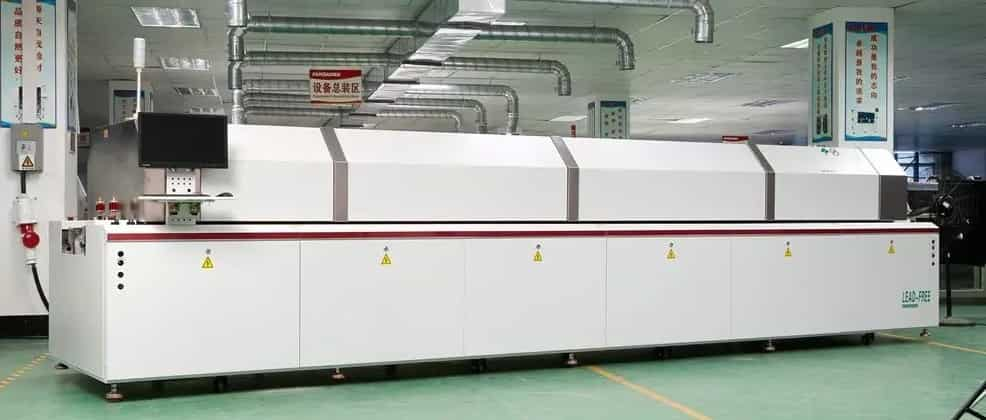
SMT equipment, PCB reflow soldering

SMT equipment, PCB reflow equipment internal diagram
6. DIP (Dual In-line Package) Soldering
DIP soldering is a technique for through-hole electronic components. These components have leads inserted into PCB holes and soldered on the opposite side to create electrical connections.
The DIP soldering process includes:
- Component Insertion: Through-hole components are inserted into PCB holes either manually or automatically. Component leads extend through the holes to the opposite side.
- Flux Application: Flux, a cleaning agent, is applied to solder joints and component leads. It removes oxides, promotes solder wetting, and enhances joint integrity.
- Soldering: The PCB with inserted components passes through a wave soldering machine or solder fountain. A wave of molten solder contacts exposed leads and PCB pads on the bottom side. Upon cooling, the solder creates reliable electrical connections.
- Inspection and Testing: Post-soldering, the PCB undergoes inspection and testing. This ensures solder joint quality and component functionality. Visual checks, automated optical inspection (AOI), or in-circuit testing (ICT) may be used to detect defects or faults.
DIP soldering suits components needing mechanical stability or specific through-hole applications. It works well for components with larger pin pitches or those handling higher currents.
Highleap excels in DIP soldering, employing advanced equipment and skilled technicians to ensure precise, reliable soldering. Our commitment to quality and detail enables us to deliver PCB assemblies meeting exacting standards.
Real shot of details of power board vertical material turning into horizontal material slow motion
7. Wave Soldering
Wave soldering is a widely used PCB assembly method where boards pass through a molten solder wave to create dependable solder joints. It’s ideal for PCBs with numerous through-hole components or large connectors with many pins.
The wave soldering process involves these key steps:
- Flux Application: Flux is applied to the PCB before soldering. It serves multiple purposes, such as removing oxides, aiding solder wetting, and improving solder joint quality.
- Preheating: The PCB is preheated to a specific temperature to ensure proper solder flow and adhesion. Preheating also minimizes thermal shock to the components.
- Wave Soldering: The preheated PCB passes over a molten solder wave generated by a pump. This solder wave maintains a constant flow and temperature. As the PCB moves over it, solder contacts exposed component pads and leads, forming reliable solder joints.
- Cooling and Solidification: After passing through the solder wave, the PCB enters a cooling zone. Solder joints gradually cool and solidify, securing components and establishing electrical connections.
- Inspection and Testing: Post-wave soldering, the PCB assembly undergoes inspection and testing to ensure solder joint quality and reliability. Visual checks, automated optical inspection (AOI), or in-circuit testing (ICT) may identify defects or faults.
Reflow soldering is preferred for surface mount components, but wave soldering remains efficient and effective for boards with many through-hole components or high-pin-count connectors. It offers a reliable, cost-effective solution for such applications.
Highleap commitment to quality and efficiency ensures that the process meets the highest industry standards, resulting in reliable PCB assemblies.

Wave Soldering
SMT wave soldering
8. AOI Automatic Optical Inspection
Highleap implements 100% AOI testing for all PCB assemblies using advanced automated optical inspection machines. AOI is a highly efficient method for inspecting printed circuit boards and other electronics. Specialized cameras autonomously scan devices for defects like missing components or quality issues.
The AOI systems capture high-resolution images analyzed by software algorithms to precisely detect potential defects. It compares images to specifications, identifying deviations. During inspection, aspects like component placement, solder joints, polarity and presence/absence are evaluated.
Automating inspection enhances speed and accuracy of defect detection, ensuring high product quality and reliability. Implementing AOI for prototypes and mass production demonstrates our commitment to superior PCB assemblies. Using cutting-edge AOI technology minimizes risks and defects while improving efficiency. Our goal is providing customers the highest quality products meeting specifications.

AOI
9. X-Ray Inspection
Following a reflow cycle, boards containing components like BGA, QFN, or other lead-less packages undergo X-Ray Inspection.
X-Rays penetrate an IC package’s silicon and reflect off the metal connections beneath, producing an image of the solder joints. This image is then analyzed using advanced image processing software, akin to Automated Optical Inspection (AOI). Areas with higher component density appear darker, enabling quantitative analysis for solder joint quality assessment against industry standards.
X-Ray inspection not only identifies PCB assembly issues but also aids in pinpointing the root cause of defects. It can reveal problems like insufficient solder paste, misaligned part placement, or incorrect reflow profiles.

X-Ray
10. Cleaning and Inspecting
Our PCBs undergo a meticulous cleaning process and a thorough defect inspection. If no anomalies are detected, the PCB receives the green light for further processing. However, in cases where defects are identified, we initiate the necessary repair or rework procedures. To facilitate this, we employ a range of cutting-edge equipment, including FAI, AOI, X-ray machines, and more.
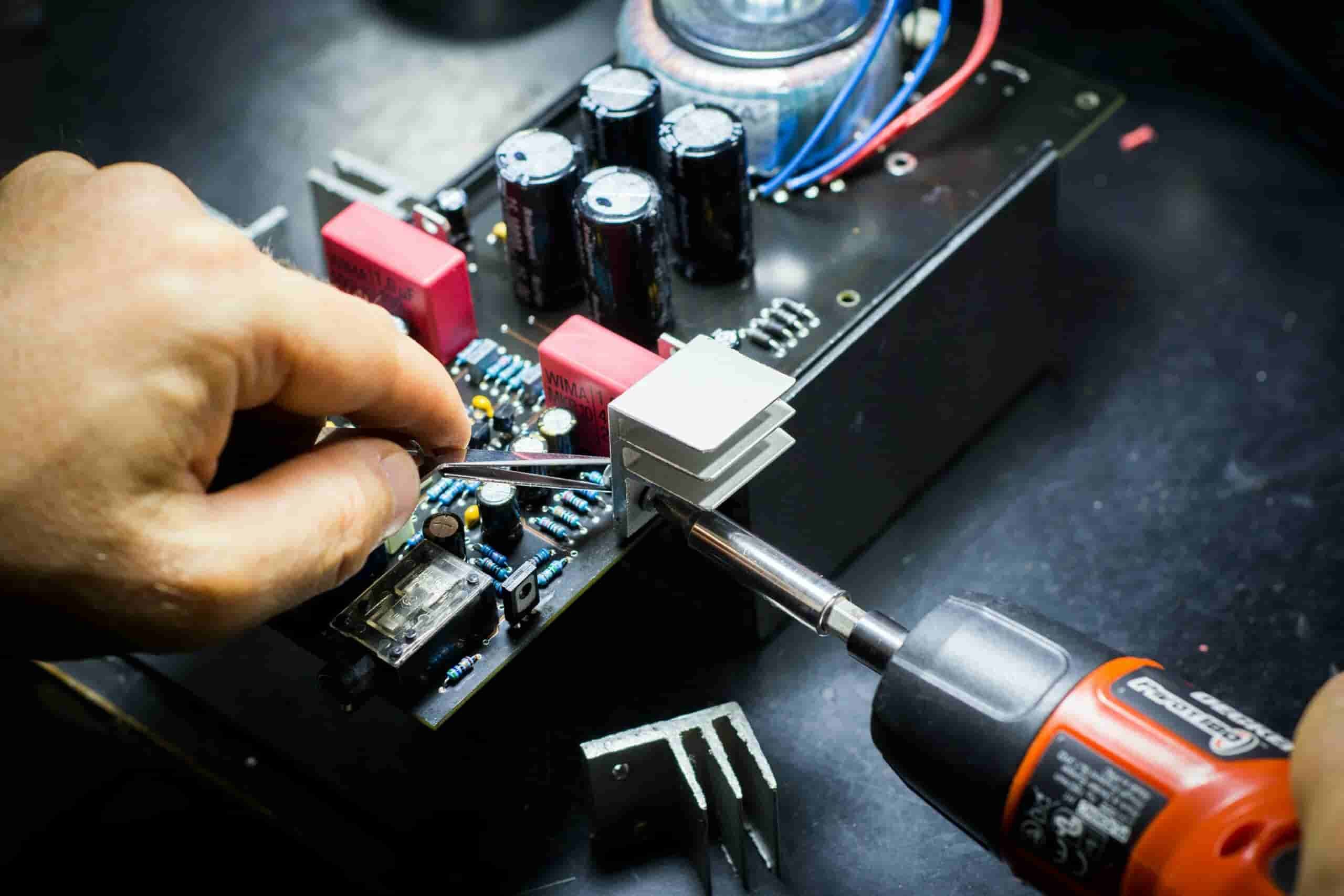
Cleaning and Inspecting
11. Packing and Delivery
Our packaging solutions are tailored to meet your specific requirements, offering a range of options such as ESD bags, cartons, reusable carton packaging, customized ESD plastic containers, and product-specific trays designed for ESD compatibility. Rest assured, we prioritize the fastest and safest delivery of your products. We have established partnerships with major logistics firms, ensuring you receive the best service at the most competitive rates. Your satisfaction is our priority.
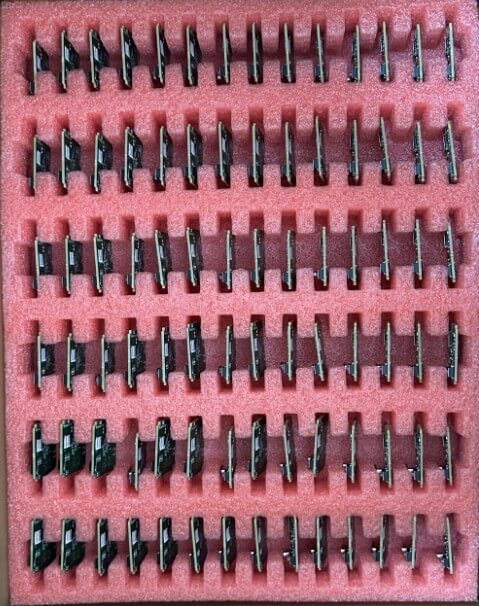
Packing
Advantages of Highleap’s PCBA
As a leading provider of specialized SMT solutions, Highleap also offers full-service PCBA manufacturing. Our experienced engineers are experts in circuit board design and tooling development to take a project from prototype to high-volume production. Surface Mount Technology (SMT) assembly equipment encompasses a diverse array of tools and machinery meticulously engineered to facilitate the precise placement and soldering of electronic components onto printed circuit boards.
Highleap’s PCBA line uses top SMT placement and reflow systems to assemble tight-tolerance, fine-pitch boards. Automated inspection per stringent standards, plus value-adds like conformal coating and testing, enable turnkey solutions. Customers value Highleap’s vertical integration and responsiveness – by controlling the process in-house under a rigorous quality system, Highleap rapidly ramps up projects while ensuring high yields and minimal defects, advantages for those seeking a reliable partner.
Top 10 SMT equipment in the world
1. Europlacer SMT Assembly Machines
Europlacer is another leading surface mount technology SMT machine brand. It provides a complete SMT Line Solution and assures a productivity solution that suits everybody’s needs.
So, from the pick-and-place side, the best of Europlacer’s production is iineo+. Europlacer claims its iineo+ is a multi-function pick-and-place machine with the highest flexibility level and feeder count in the whole industry. The iineo+ is a modern integrated intelligence-based SMT machine with digital cameras that facilitate a close-up look at the circuit board. A worth-mentioning feature of iineo+ is its ability to produce extra-large circuit boards. It is capable of producing 1610 mm x 600 mm size boards. The iineo++ is one of those machines offering two rotatory heads on X/Y coordinates, each containing 8 or 12 smart nozzles, which help to deliver a maximum placement speed of 30,000 CPH (IPC: 24, 200CPH).
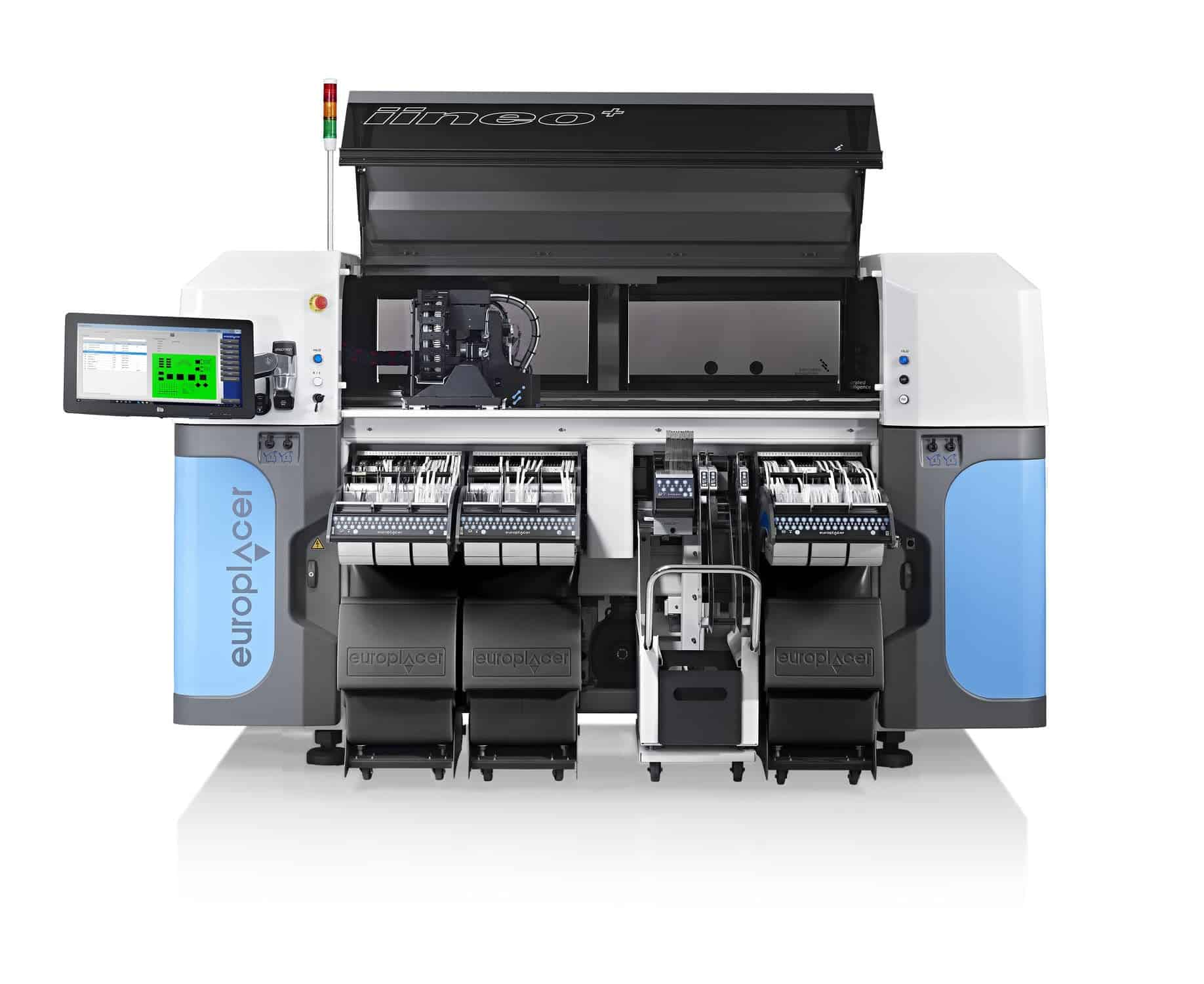
Europlacer SMT
2. Kurtz Ersa SMT Assembly Machines
Kurtz Ersa offers a broad range of SMT machines including high-speed, high-precision pick-and-place systems like the VERSAFLEX capable of 35,000 chips per hour at ±35μm accuracy. Their reflow ovens, wave soldering machines, and printers incorporate advanced process control for precision manufacturing. Kurtz Ersa’s automated i-CON assembly cell integrates pick-and-place, printing, and reflow capabilities.
They have introduced innovations such as laser direct imaging and 8-point in-place temperature control. Kurtz Ersa’s tailored, high-end SMT equipment provides quality and flexibility and is widely used in industries like electric vehicles and industrial electronics. Their global service network supports SMT solutions that are known for precision worldwide. Kurtz Ersa is a leader in SMT equipment.

Kurtz Ersa SMT Equipment Assembly Machines
3. Yamaha SMT Assembly Machines
Yamaha is a specialized company in manufacturing heavy equipment. Its quality can never be in doubt. Along with heavy motor equipment, Yamaha is a leading brand manufacturing high-quality surface mount technology SMT machines. The main focus of Yamaha is the pick-and-place machines that offer exciting placement solutions.
If you want to try something innovative with pick-and-place machines, Yamaha could be the best manufacturer for you to contact.
The Yamaha has an ongoing list of features that proves it a perfect SMT machine manufacturer. Some of them are as follows:
Wide Range: Another factor that stands out the Yamaha is its wide range of SMT products. It offers almost everything required for the SMT assembling process ranging from Surface Mounters, Inspection Systems, SMD Storage Systems, Management Software, Solder Paste Printers, Flip Chip Bonder & Hybrid Placer, and Dispensers.
Compatible Price: Despite being a big name Yamaha is budget-friendly; your budget does not matter; you will always have something from Yamaha that will surely meet your requirements.

Yamaha SMT
4. Mycronic SMT Assembly Machines
Mycronic is a reputable brand setting the standards of pick-and-place machines on another level. The MY300 of mycronic is its best version of the SMT machine. The operators of this machine state that they are confident about populating more boards with less floor space.
Features of Mycronic SMT Machine
The Mycronic surface mount technology machine has several features, some of which are as follows.
Strong Software Suit of MY300: Mycronic offers a very user-friendly interface with its MY300. It also proposes a firm software suite that supports upgrading the software to the latest technology.
Easy to Operate: An outstanding quality of MY300 is that it is easy to operate and eases the access of machine operators, other interactive crew, and engineers to the relevant information.
More Work Less Effort: MY300 comes with an inventory management system. The MY300 merges innovative feeder technology and automatic storage with a material tracking feature. This feature of MY300 reduces human interference in the component loading process, which leads to fewer human errors and labor. With the inventory management of MY300, the material, and the information do not perform as bottlenecks anymore.
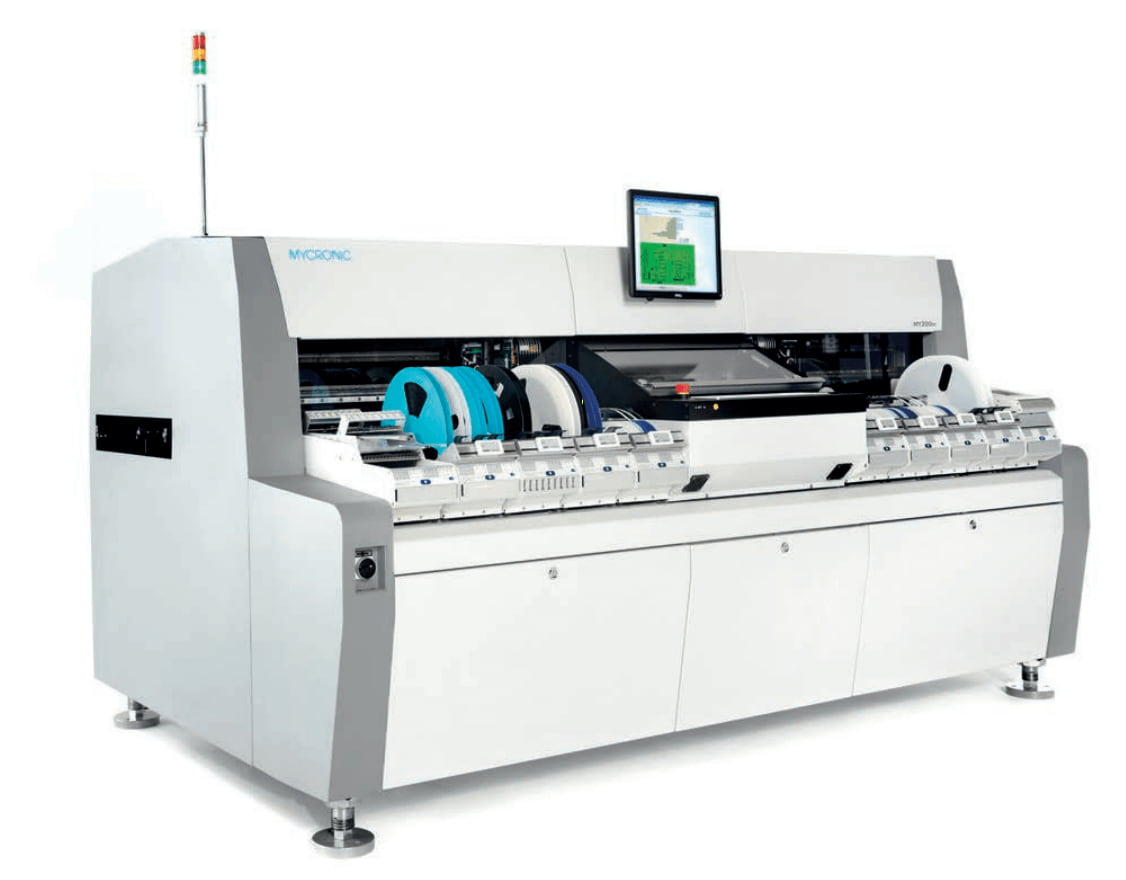
Mycronic SMT Assembly Machines
5. Juki SMT Assembly Machines
Juki is an experienced, well-known name that produces the best quality SMT machines. The Juki has a lot to offer in the SMT industry, but its brand-new RX-8 has no match. It provides the highest placement rates per square meter and achieves placement of up to 100,000 CPH.
The high-speed compact modular mounter RX-8 supports a board size of 50×50~510mm*¹ *²×450mm and a component height of 3mm. It offers a placement accuracy of ±0.04mm (Cpk ≧1).
Other options from Juki include RX-6R/RX-6B and FX-3RA.
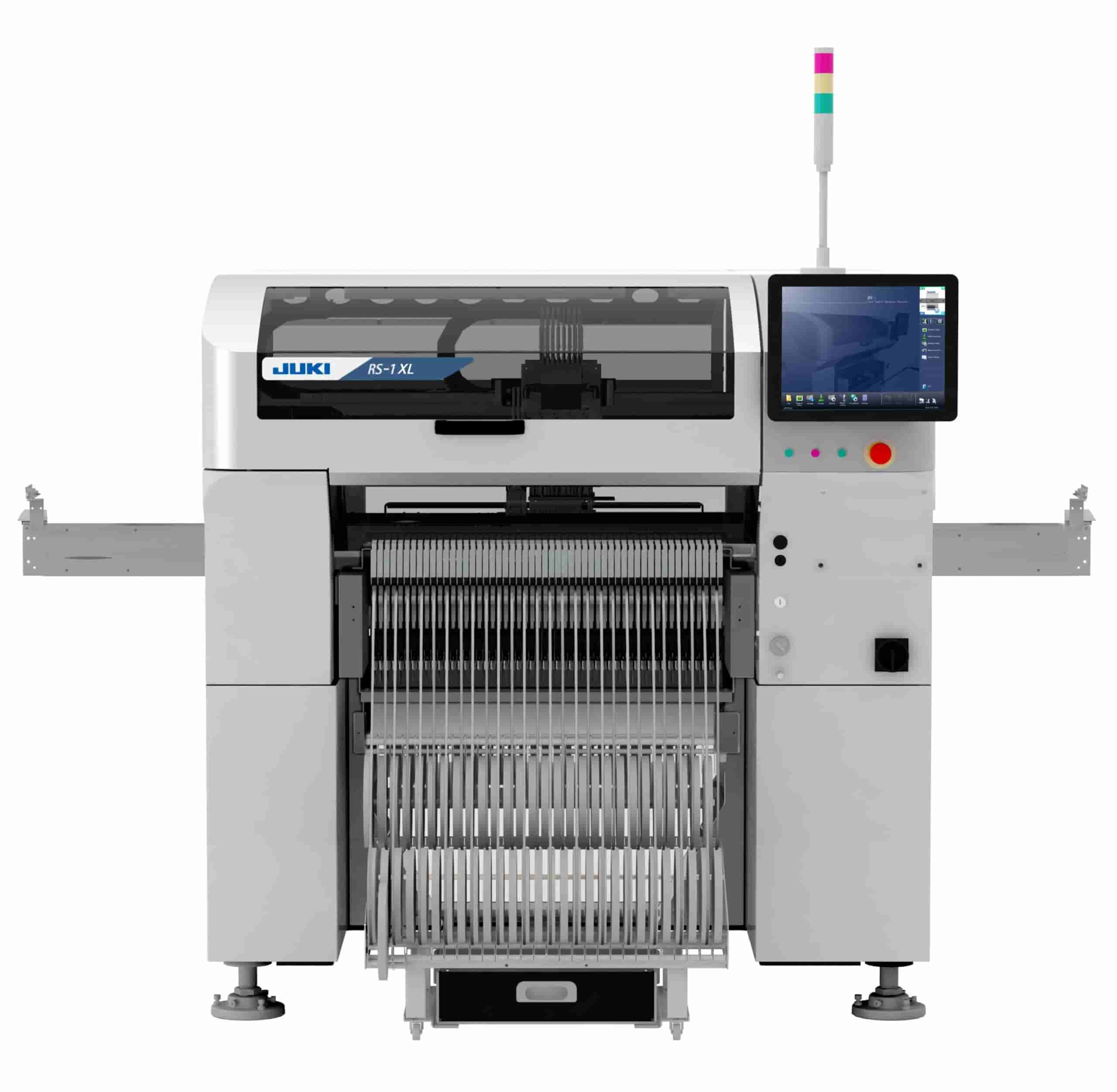
Juki SMT Assembly Machines
6. Panasonic SMT Assembly Machines
Panasonic has been in the business for more than a century. The company has a firm reputation in the market and offers a complete SMT Line Solution consisting of 5 modules of screen printers, inspection, component placement, inspection, and curing oven. Panasonic focuses on providing Smart Factory Solutions. Their range of machines varies from entry-level to extreme-complex equipment.
Another high-end of Panasonic is that it provides Open Source Software. Its NPM-W2; is one of the best pick-and-place machines with Open Source Software. It offers two types of heads ‘Lightweight 16-nozzle head’ and ’12-nozzle head’. Each category of nozzle head provides an option of High Production Mode On/Off. With high production mode ON on the 16-nozzle head, NPM-W2 provides a maximum placement speed of 38,500 CPH and an SMD placement accuracy of ±40 μm/chip.
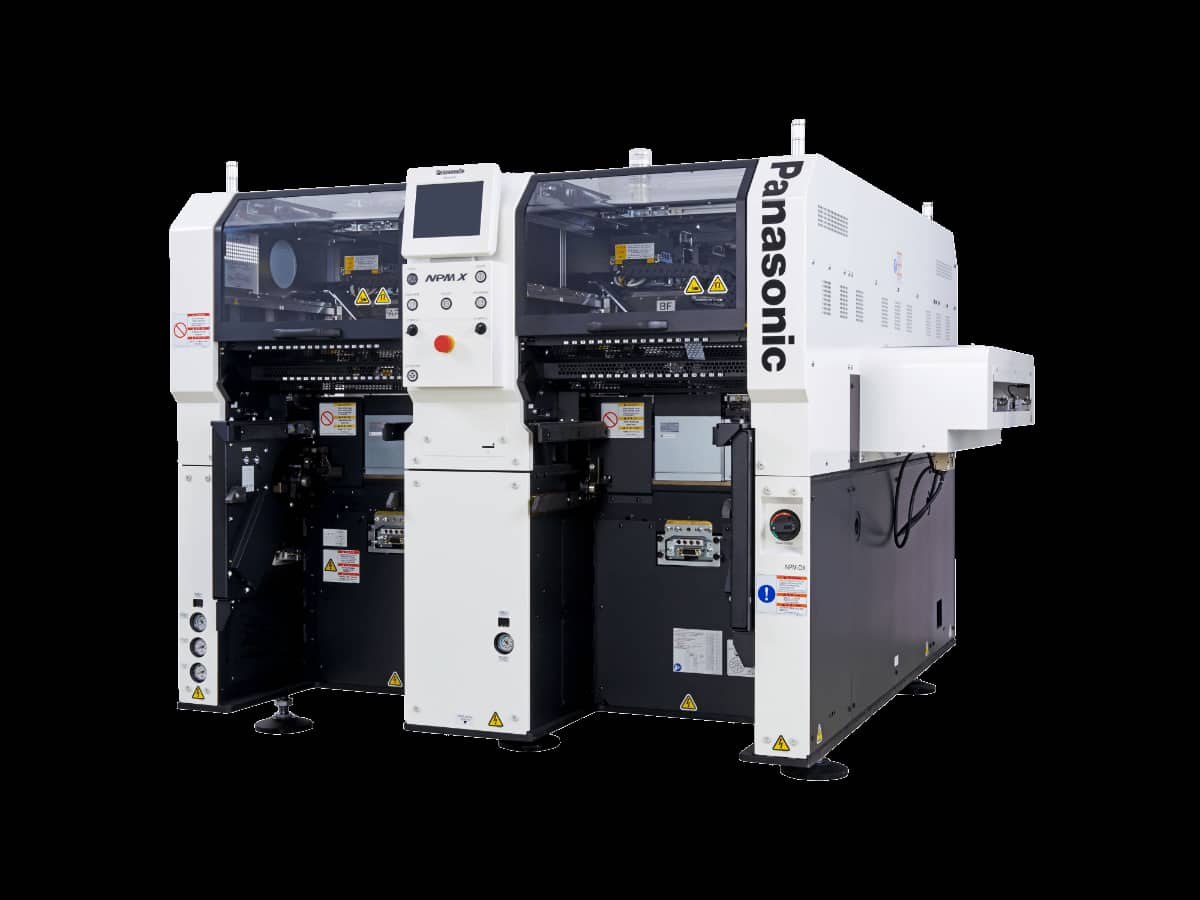
Panasonic SMT Assembly Machines
7. Universal Instruments SMT machine
The universal instrument is well-known for its electronic automation and assembly equipment. The company offers a wide range of SMT machines for low to high budgets and production needs. From the wide range of universal SMT machines, its FUZION PLATFORM is one of the best SMT machine series that implement the latest head and feeder technologies and software suits. The Fuzion has nine different models with individual features that target specific problems.
ADVANTISV PLATFORM is another series of SMT machines from the universal instrument. It is a pack of mid-range entry-level SMT machines that delivers budget-friendly performance without lacking performance.
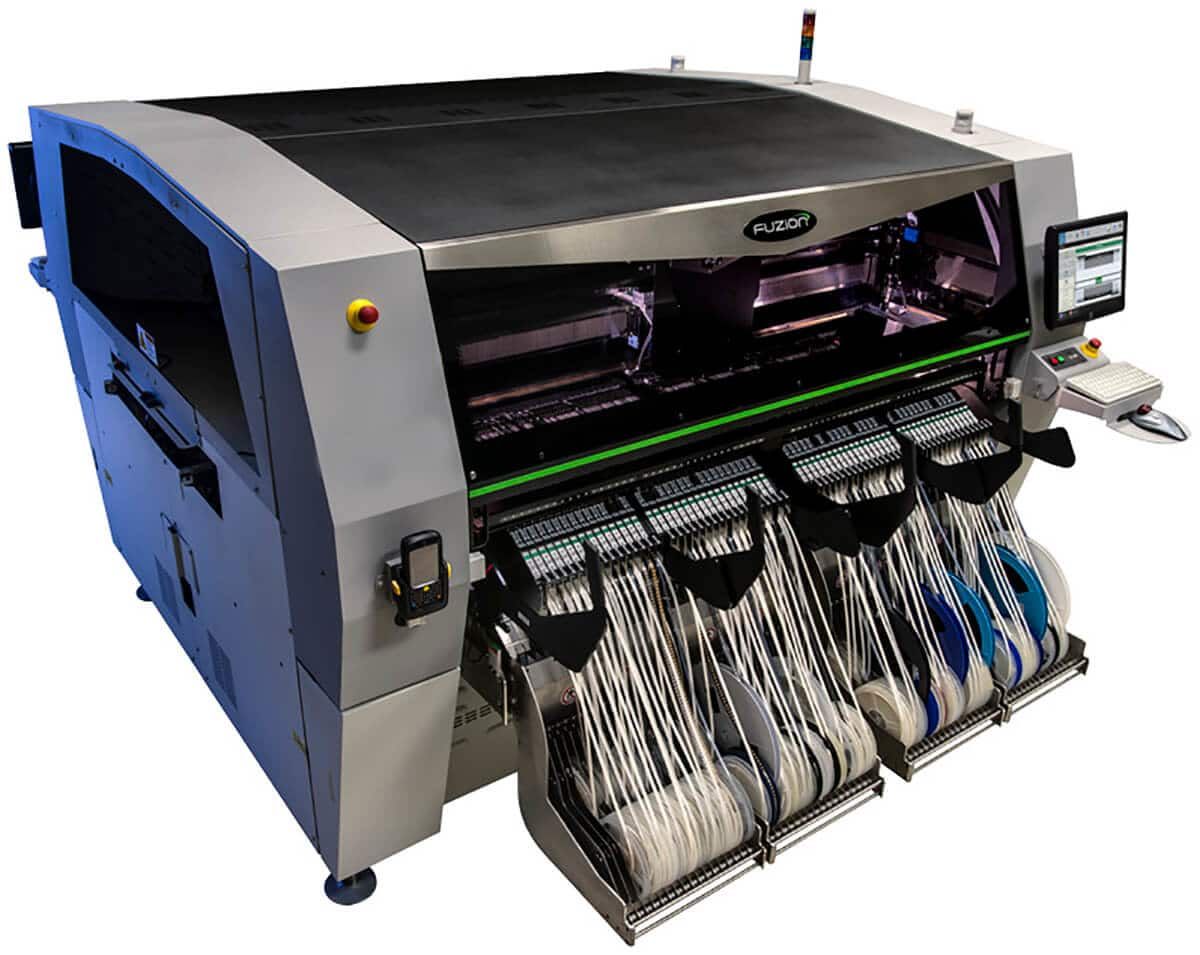
Universal Instruments SMT machine
8. Assembleon (Kulicke & Soffa) SMT Assembly Machines
Kulicke & Soffa, formerly known as Assemblon, is another leading manufacturer and distributor of Semiconductor, LED, and electronic surface mount technology SMT machines. The company has been providing a reliable service since 1951. Three of the most highlighted SMT assembly products of Kulicke & Soffa include iFlex, iX502/iX302, and Hybrid SiP.
The Kulicke & Soffa’s iFlex is a low-energy consuming sustainable, high-yield providing SMT pick-and-place machine. The iFlex has three available modules:
T4: It offers Chip and IC shooting from 0402M (01005) to 17.5 x 17.5 x 15 mm at 51,000 CPH (IPC9850(A))
T2: Provides Chip and IC shooting from 0402M (01005) to 45 x 45 x 21 mm at 24,300 CPH (IPC9850(A))
H1: Offers End-of-line placer placing up to 120 x 52 x 25 mm at 7,500 CPH (IPC9850(A))
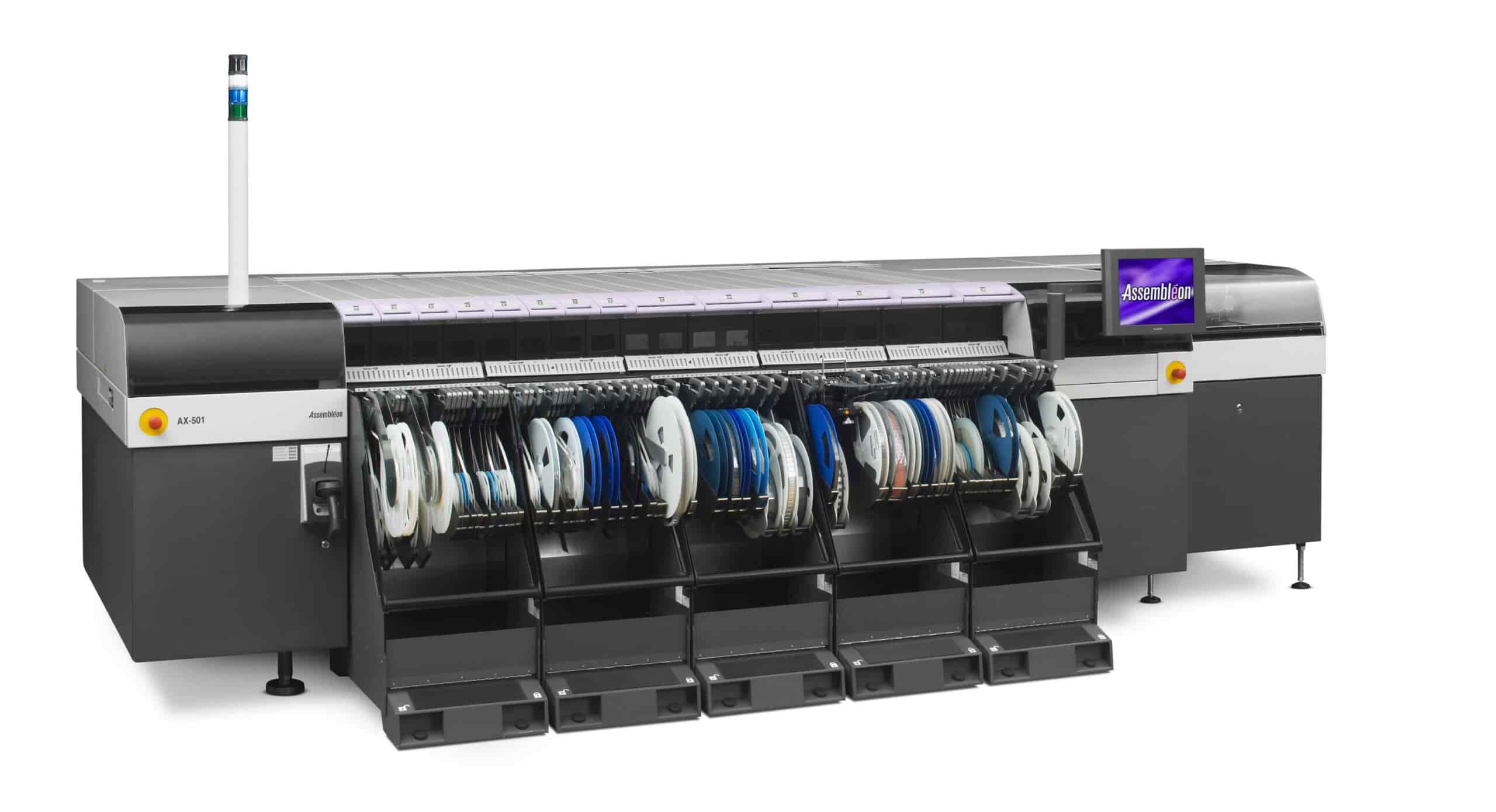
Assembleon (Kulicke & Soffa) SMT Assembly Machines
9. FUJI Corporation SMT Assembly Machines
Fuji Corporation built electronic assembly machines and machine tools as their main products. The Fuji corporation provides complete SMT assembly equipment, including:Mounters、Printers、Inserters、Automatic warehouses、Softwares、Automatic Maintainance Units、Automation Units.Fuji has a list of brilliant SMT machines, all of which we are discussing in its brand-new NXTR S Model. Fuji’s intention with its NXTR series is to smooth the future of smart factories. Hence, NXTR’s S model comes with exciting features. Some of these are Real-time sensing placement, Optimized placement actions, and part-handling checks after their arrangement.
Features of NXTR S Model
Single Action Head Exchange: NXTR S allow operators to change the head without using tools. This feature of the S model enables hassle-free maintenance and troubleshooting.
Minimal Investment: It provides an option to upgrade the module by making additional investments on the scale of single modules to increase production capacity.
Placement: The NXRT S Model can pick and place surface mount devices with all-time high accuracy of ±25 µm, plus it provides placement pressure control.
Placement Checks: The most compelling feature of this machine is its ability to inspect the SMD placement within the placement machine.
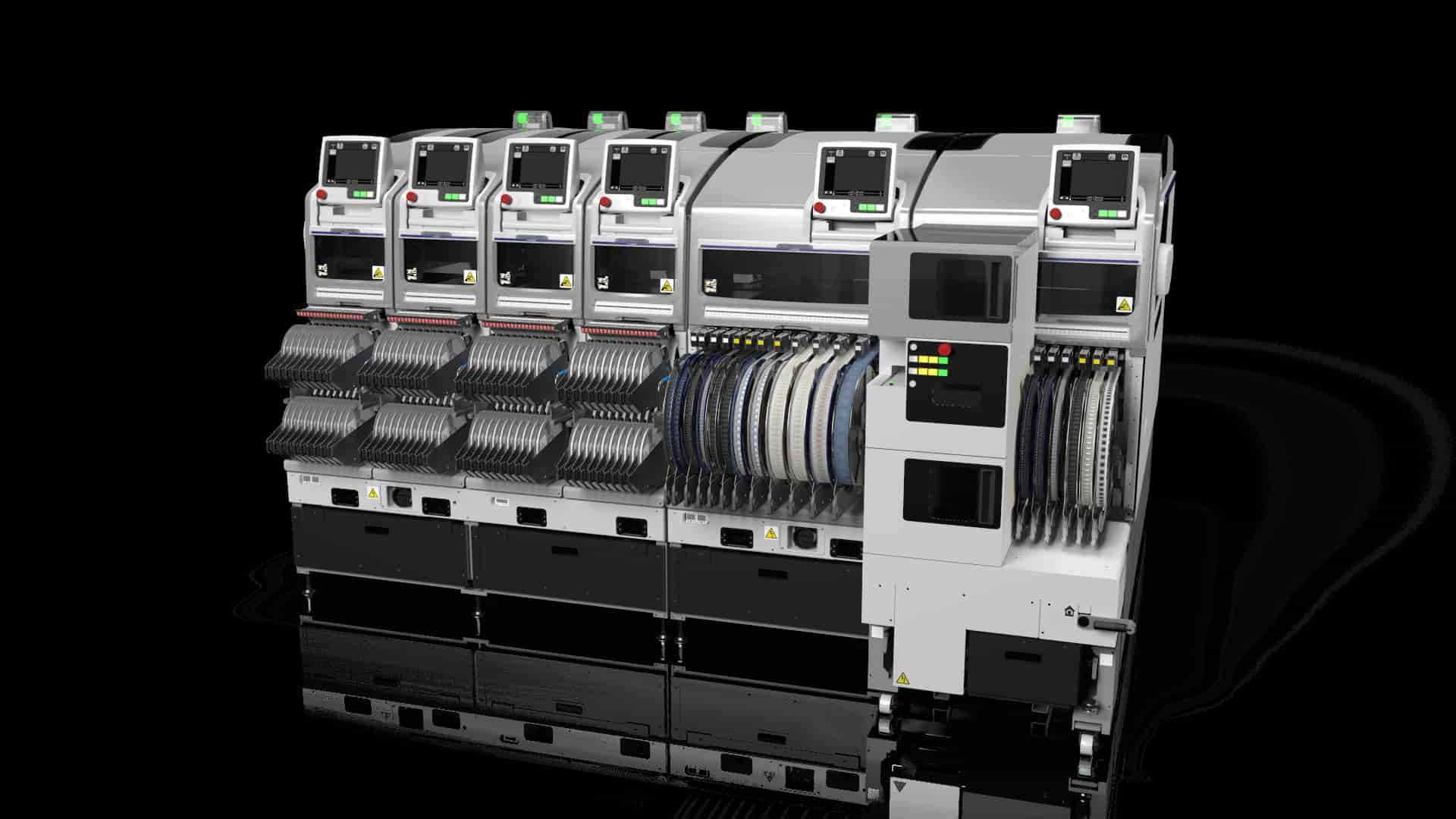
FUJI Corporation SMT Assembly Machines
10. Hanwha Precision Machinery SMT Assembly Machines
Hanwha Precision Machinery built its first chip mounter in 1989, and since then, it has facilitated the SMT assembling industry with the state of the art SMT machines. The Hanwha Precision Machinery offers a wide range of SMT assembling equipment, including surface mount technology mounters, semiconductor equipment, insertion, and assembly automation equipment, and integrated software solutions.
The most highlighted features of the company are its focus on innovation, versatility, and efficiency.
Some of the best SMT machines of
Hanwha Precision Machinery includes:
XM520 (100,000 CPH, Optimum)
HM520 (80,000 CPH)
DECAN F2 (80,000 CPH)
SM481 PLUS (40,000 CPH, Optimum, Fly+Fix Camera)
